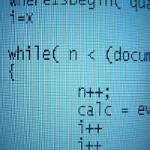Advanced Dependency Injection: Comparing Spring, Guice, and Dagger 2
Dependency Injection (DI) is a fundamental design pattern in modern software development, enabling developers to create loosely coupled, maintainable, and testable applications. Among the most popular DI frameworks are Spring, Guice, and Dagger 2, each offering unique features and use cases. In this article, we will explore the differences between these frameworks, their strengths and weaknesses, and how they fit into large-scale applications.
1. What is Dependency Injection?
Dependency Injection is a design pattern where objects receive their dependencies from an external source rather than creating them internally. This promotes modularity, simplifies testing, and improves code maintainability. DI frameworks automate the process of injecting dependencies, making it easier to manage complex applications.
2. Spring: The Enterprise Standard
Spring is one of the most widely used DI frameworks, particularly in enterprise applications. It is part of the larger Spring ecosystem, which includes tools for web development, data access, security, and more.
2.1 Key Features of Spring:
- Comprehensive Ecosystem: Spring integrates seamlessly with other Spring projects like Spring Boot, Spring MVC, and Spring Data.
- XML and Annotation-Based Configuration: Supports both traditional XML and modern annotation-based configuration.
- AOP (Aspect-Oriented Programming): Provides advanced features like transaction management and security through AOP.
- Mature and Stable: Spring has been around for decades and is trusted by enterprises worldwide.
2.2 Use Cases for Spring:
- Enterprise Applications: Spring is ideal for large-scale applications with complex requirements, such as ERP systems or financial platforms.
- Microservices: Spring Boot simplifies the development of microservices with built-in DI and auto-configuration.
- Web Applications: Spring MVC is a popular choice for building web applications with robust DI support.
3. Guice: Lightweight and Flexible
Guice (pronounced “juice”) is a lightweight DI framework developed by Google. It is designed to be simple and flexible, making it a popular choice for applications that don’t require the full Spring ecosystem.
3.1 Key Features of Guice:
- Annotation-Based Configuration: Guice relies heavily on annotations for dependency injection, reducing the need for XML configuration.
- Lightweight: Guice has a small footprint and minimal overhead, making it suitable for performance-critical applications.
- Custom Bindings: Guice allows developers to define custom bindings for complex dependency scenarios.
- Integration with Google Tools: Guice works well with other Google libraries and frameworks, such as Google App Engine.
3.2 Use Cases for Guice:
- Lightweight Applications: Guice is ideal for smaller applications or libraries where a full-fledged DI framework like Spring would be overkill.
- Google Cloud Projects: Guice is a natural fit for applications built on Google Cloud Platform (GCP) or using Google libraries.
- Modular Applications: Guice’s flexibility makes it a good choice for modular applications with dynamic dependency requirements.
4. Dagger 2: The Modern Choice
Dagger 2 is a compile-time DI framework developed by Google and Square. It is designed to be fast, efficient, and easy to use, with a focus on performance and scalability.
4.1 Key Features of Dagger 2:
- Compile-Time DI: Dagger 2 generates dependency injection code at compile time, resulting in faster runtime performance and fewer errors.
- No Reflection: Unlike Spring and Guice, Dagger 2 does not use reflection, making it more efficient and suitable for Android development.
- Modular and Scalable: Dagger 2’s component-based architecture makes it easy to scale and manage dependencies in large applications.
- Strong Typing: Dagger 2 uses Java’s type system to ensure that dependencies are correctly injected at compile time.
4.2 Use Cases for Dagger 2:
- Android Applications: Dagger 2 is widely used in Android development due to its performance and lack of reflection.
- High-Performance Applications: Applications requiring low overhead and fast startup times benefit from Dagger 2’s compile-time DI.
- Large-Scale Applications: Dagger 2’s modular architecture makes it a good choice for complex, large-scale applications.
5. Comparing Spring, Guice, and Dagger 2
1. Configuration
- Spring: Supports both XML and annotation-based configuration, offering flexibility but also complexity.
- Guice: Primarily uses annotation-based configuration, making it simpler but less flexible than Spring.
- Dagger 2: Relies on annotations and compile-time code generation, providing a balance of simplicity and performance.
2. Performance
- Spring: Uses reflection for DI, which can lead to slower startup times and higher memory usage.
- Guice: Also uses reflection but is lighter and faster than Spring.
- Dagger 2: Generates code at compile time, resulting in faster performance and lower overhead.
3. Ecosystem and Integration
- Spring: Offers a comprehensive ecosystem with tools for web development, data access, and more.
- Guice: Lightweight and integrates well with Google tools but lacks the extensive ecosystem of Spring.
- Dagger 2: Focused on DI and performance, with limited integration outside of Android development.
4. Learning Curve
- Spring: Has a steep learning curve due to its extensive features and configuration options.
- Guice: Easier to learn and use, making it a good choice for smaller projects.
- Dagger 2: Requires understanding of compile-time DI and component-based architecture, but is straightforward once mastered.
6. Opinions and Considerations
6.1 Which Framework Should You Choose?
- Spring is the best choice for enterprise applications and projects that require a full-featured ecosystem.
- Guice is ideal for lightweight applications or projects that need flexibility without the overhead of Spring.
- Dagger 2 excels in performance-critical applications, particularly in Android development.
6.2 The Future of Dependency Injection
As applications become more modular and performance-oriented, compile-time DI frameworks like Dagger 2 are likely to gain popularity. However, Spring and Guice will continue to dominate in their respective niches due to their maturity and flexibility.
7. Conclusion
Spring, Guice, and Dagger 2 each have their strengths and weaknesses, making them suitable for different types of applications. Spring is the go-to choice for enterprise applications, Guice is perfect for lightweight and modular projects, and Dagger 2 shines in performance-critical and Android development. By understanding the differences between these frameworks, developers can choose the right tool for their specific needs.
8. Sources
- Spring Framework Documentation: https://spring.io/projects/spring-framework
- Guice GitHub Repository: https://github.com/google/guice
- Dagger 2 Documentation: https://dagger.dev/
- Comparison of DI Frameworks: https://www.baeldung.com/



